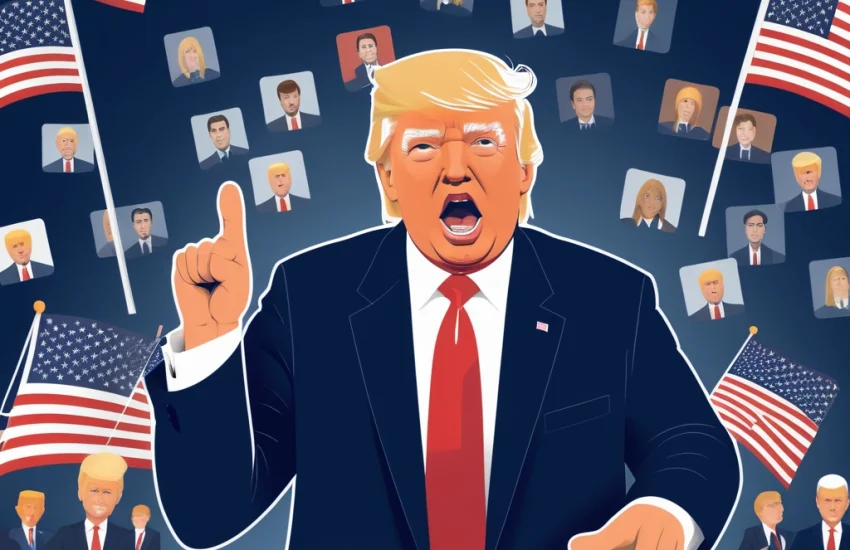The emergence of social media as a primary channel for presidential communication marked a significant shift in American political discourse. Donald Trump’s use of Twitter, in particular, represented an unprecedented approach to executive communication that transformed both political messaging and public engagement. This analysis examines the impact, patterns, and implications of his social media presence during and after his presidency.
Executive Communication in the Digital Age
Donald Trump’s approach to social media communication fundamentally altered the traditional paradigm of presidential messaging. Where previous presidents relied primarily on formal press briefings and prepared statements, Trump’s direct engagement through social media created an unmediated channel between the executive office and the public. His morning tweets often set the day’s national agenda and influenced global markets, demonstrating the unprecedented power of this communication method.
Signature Communication Patterns
Trump’s social media communications displayed consistent stylistic elements that became immediately recognizable to both supporters and critics. His frequent use of capitalization for emphasis, deployment of short, declarative sentences, and creation of memorable phrases and nicknames established a distinctive communication style. The phrase “MAKE AMERICA GREAT AGAIN!” emerged as perhaps his most recognized digital signature, often accompanied by exclamation marks and strong declarative statements.
Policy Announcements and Governance
The use of social media for major policy announcements marked a significant departure from traditional governing practices. Notable examples included personnel changes within his administration, shifts in foreign policy, and responses to national and international events. His announcement of military policy regarding transgender service members and various tariff decisions via Twitter demonstrated how social media became a primary vehicle for executive decision-making communication.
Market Impact and Economic Communication
Trump’s social media presence had measurable effects on financial markets, particularly when addressing trade relationships, corporate policy, or specific companies. His tweets about companies like Boeing, Amazon, and various automakers often triggered immediate market responses, demonstrating the remarkable influence of executive social media communication on economic behavior.
Crisis Communication and Emergency Response
During crisis situations, Trump’s social media response often bypassed traditional emergency communication channels. His comments during natural disasters, public health emergencies, and national security situations showed how social media could function as an immediate, though sometimes controversial, channel for presidential crisis communication.
International Relations and Diplomacy
Social media became an unprecedented platform for conducting international diplomacy. Trump’s tweets about North Korea, China, and various NATO allies represented a significant departure from traditional diplomatic communication channels. His direct addressing of foreign leaders and commentary on international negotiations through social media created new challenges and opportunities in diplomatic relations.
Media Relations and Press Interaction
The relationship between presidential social media communication and traditional media coverage evolved significantly during this period. Trump’s characterization of various news organizations as “fake news” and his direct challenges to media coverage through social media created a new dynamic in press-executive relations. His tweets often served as both news events themselves and responses to media coverage.
Legal and Constitutional Implications
The use of social media for presidential communications raised novel legal and constitutional questions. Courts grappled with whether presidential tweets constituted official statements, and debates emerged about the archiving requirements for presidential social media communications under the Presidential Records Act.
Political Movement Building and Base Engagement
Social media served as a powerful tool for maintaining political engagement and mobilizing supporters. Trump’s ability to communicate directly with his base through social media demonstrated the platform’s potential for political organization and movement building. His tweets often generated immediate responses from supporters and shaped political narratives in real-time.
Post-Presidency Impact
Following his presidency and subsequent removal from major social media platforms, the impact of Trump’s social media presence continued to influence political discourse. The creation of alternative platforms and the ongoing discussion of his social media ban highlighted questions about free speech, platform regulation, and political communication in the digital age.
Digital Communication Strategy Analysis
The effectiveness of Trump’s social media strategy relied on several key elements: message repetition, emotional engagement, timing, and the ability to bypass traditional media filters. His messages often combined policy statements with personal commentary, creating a hybrid form of political communication that proved highly engaging for both supporters and critics.
Influence on Political Communication
Trump’s social media approach has had lasting effects on political communication strategies. Other political figures have adopted elements of his direct communication style, though often with different tactical approaches. His influence can be seen in the increased emphasis on personality-driven political messaging and the use of social media for direct constituent engagement.
Media Ecosystem Impact
The interaction between social media communications and traditional media coverage created a new kind of media ecosystem. Trump’s tweets often drove news cycles and required media organizations to develop new strategies for covering presidential social media communications. This dynamic transformed both journalism practices and public consumption of political news.
Conclusion
Donald Trump’s use of social media, particularly Twitter, represented a watershed moment in political communication. His approach demonstrated both the potential and pitfalls of direct digital communication from the executive branch. The impact of this communication style continues to influence political discourse, media coverage, and public engagement with political figures.
The legacy of this period extends beyond immediate political effects to raise fundamental questions about democratic discourse in the digital age. Understanding these patterns and their implications remains crucial for analyzing current political trends and anticipating future developments in political communication. As social media continues to evolve, the lessons from this period will likely influence political communication strategies for years to come.
